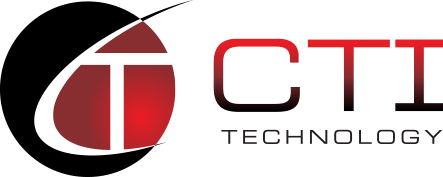How Manufacturers Should Evaluate ERP Systems
Despite the numerous benefits of ERP systems, many manufacturers have been slow to implement them. A recent study of manufacturing firms without ERP systems provides some insights as to why. Nearly half of all participants (49 percent) cited their small size as a reason for not implementing an ERP solution. Twenty-six percent of participants noted past practice as a factor, while nearly a quarter (23 percent) predicted they could operate without it. The costs (23 percent) and effort to implement (19 percent) rounded out the list.
Size, costs, and internal resources are perhaps understandable concerns. However, many ERP vendors have developed smaller packages with subscription-pricing plans that can be very attractive to small firms. Moreover, most ERP vendors pride themselves on their ease of deployment and implementation. If a manufacturer believes an ERP system is too complex to implement, they’re looking at the wrong solution for their business.
However, the percentage of those who’ve indicated they can operate without an ERP system is more disturbing. Manufacturers who don’t believe they need ERP are blind to how constrained they are relative to competitors who’ve embraced the full promise of digital transformation. Manufacturers that are leveraging automation, predictive analytics, and machine learning algorithms can optimize their productivity organization-wide. Those who’ve failed to do so continue to suffer from suboptimal productivity and increased vulnerability to downtime, as well as weak data visibility, internal controls, data integrity, and collaboration capacity.
Often, manufacturers have had a bad experience trying to implement an ERP or other large-scale software application. Sometimes, they just don’t know where to start. If you’re recovering from a botched ERP rollout or are struggling to make sense of your ERP options, consider these best practices for evaluating different ERP systems.
Ease of Use
Another reason survey of manufacturers found that the top five criteria they were looking for in an ERP solution were “ease-of-use” (50 percent), “functionality” (46 percent), “total cost of ownership” (43 percent), “time to value” (27 percent) and “integration technology and capabilities” (27 percent). These are all critical, perhaps none more so than ease of use.
Fundamentally, ERP systems are meant to make users’ work easier by streamlining processes, automating tasks, and improving data visibility. If an ERP system is challenging to use, it’s not fulfilling its primary function.
Manufacturers need systems that are easy to use by all employees across the organization. No matter how sophisticated a system it is, it should help reduce your IT staff’s workload, not increase it. Your ERP system should not require complex custom scripting to use it. You should be able to simply develop customized rules and workflows tailored to your firm without the need for programming.
You should also not need to develop new, more complex workflows to manage its HR, payroll, or other functions. And your system should leverage AI to recognize usage patterns and provide actionable strategic insights and recommendations to departments across your firm.
Select an ERP system that is easy to use and easy to implement (and scale when needed). Make sure that your ERP allows you to automate and streamline processes easily. Before purchase, develop and test common use cases with stakeholders in every department using a demo or trial version to ensure the platform operates the way your firm requires.
Functionality
Though manufacturers listed “functionality” and “integration technologies and capabilities,” the latter should be considered as part of the former. You need your ERP system to function when deployed with limited, if any, system errors, downtime, or other issues. Your ERP system should support your operations across the organization, from sales to production to human resources. It should allow you to automate low-level tasks across these areas, facilitate collaboration, and provide you with the data you need when you need it.
Further, you’ll want an ERP system that can be integrated with a wide variety of technologies. You may want to preserve some of your legacy systems, in which case you may want a custom-built solution that helps you integrate current new systems with new modular software applications. An ERP with broad integration capacity can help you leverage other software applications that may add value to your business, which may be helpful if you expand internal functions and operations or scale up production.
Select an ERP system that performs well within the confines of your IT environment, supports all of your departments, and can be integrated with a wide range of hardware and software technologies easily.
Costs
Costs are, of course, critical as well. If you’re looking at an on-premise ERP system, you want one with the lowest amount of capital expenses (CapEx) and few ongoing operating expenses (OpEx). Cloud-based SaaS ERP platform vendors typically use subscription pricing methods, which means regular OpEX (which, of course, you want to be as low as possible). By assessing your CapEx and OpEx expenditures, you can estimate your total cost of ownership over the projected life of the platform.
But purchase price and ownership costs alone should not be the deciding factors. Manufacturers listed “time to value” as the fourth most important consideration. ERP systems generate cost-savings in numerous ways, including:
- Identifying and eliminating areas of excessive spending more easily by centralizing financial data across the organization and leveraging rich data analytics tools
- Avoiding costly equipment repairs through predictive maintenance
- Invoicing vendors more quickly and accurately
- Mitigating the risk of vendor overpayments through digitized procurement processes and controls
- Pinpointing and remediating areas of production underperformance more effectively
- Reducing the risk of handwritten documentation resulting in compliance issues (for example, misinterpreted timesheets resulting in employee underpayments)
- Saving you the OpEX costs of maintaining multiple legacy IT systems across the organization
- Managing your inventory more effectively
Over time, you should be able to recoup your initial ERP system investment and enjoy net cost savings each month. When you consider your CapEx, OpEx, and total ownership costs, also consider how quickly you can recover your investment. An easy-to-use and fully functional system may be worth a bit more upfront if your savings offset is substantial.
Starting with these evaluative criteria can help you narrow down your alternatives considerably. Work with your IT department to drill down on each platform’s IT security measures to safeguard your firm. And you also may want to look at industry-specific solutions as well. If you don’t have an ERP in place, it’s usually helpful to work with an experienced IT solutions provider to get started. If you’d like more information on how an ERP system can help optimize your firm’s growth, reach out to us at CTI Technology today.
Why Is CTI Technology The Best Choice For IT Services In The Chicagoland Region?






















